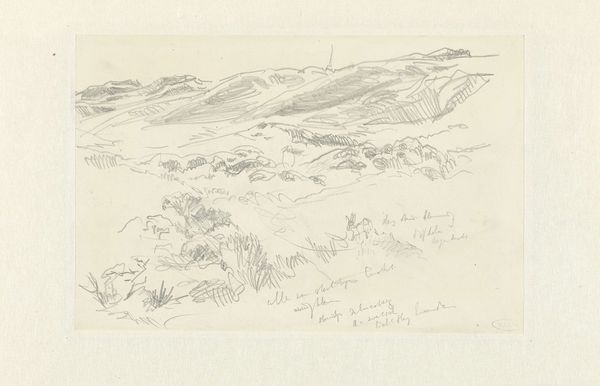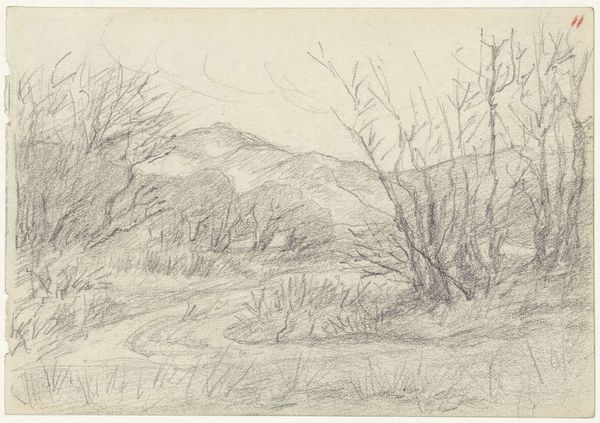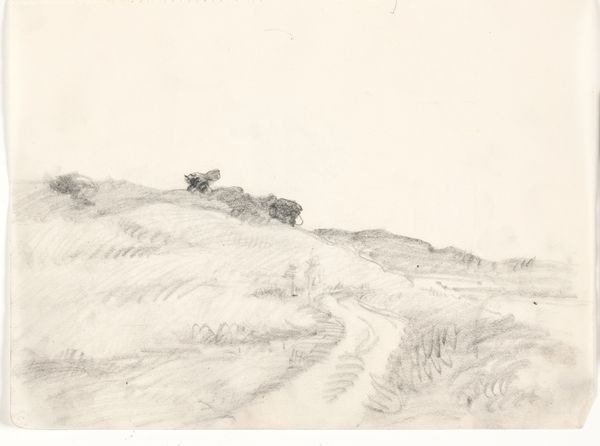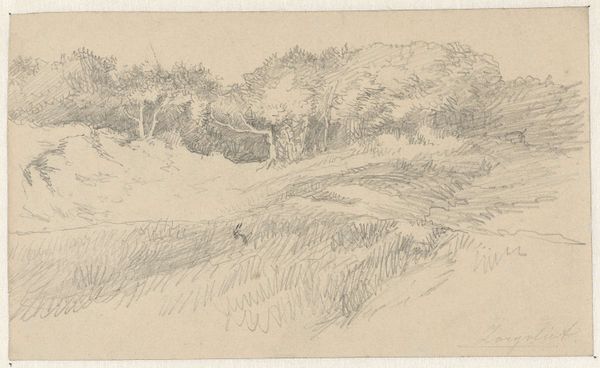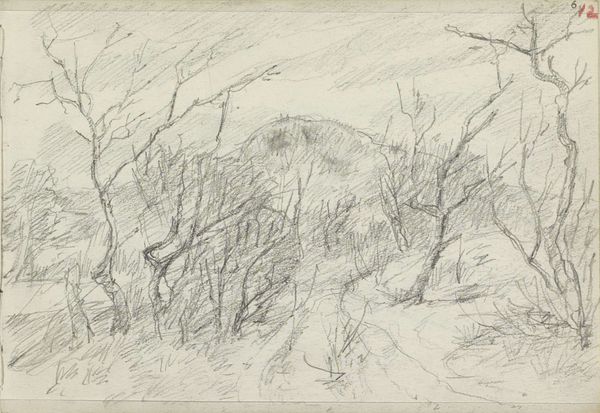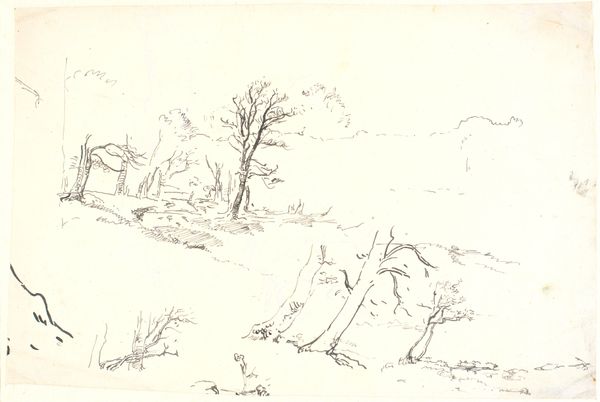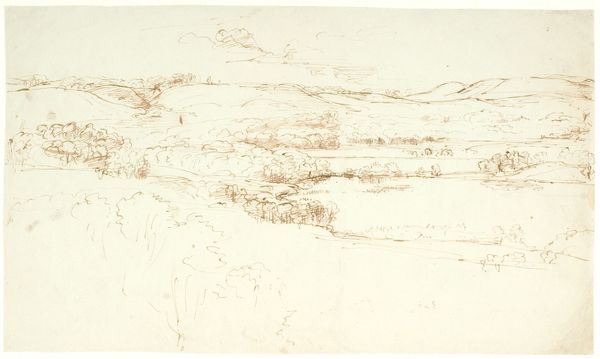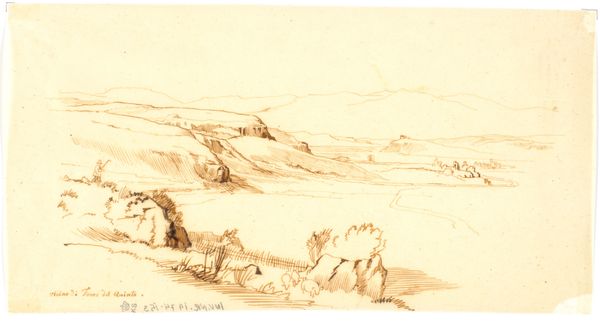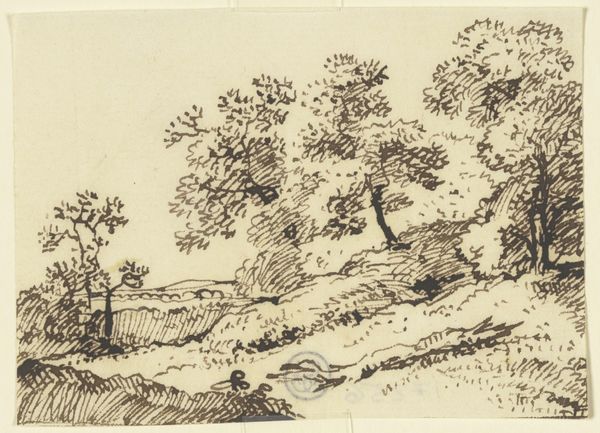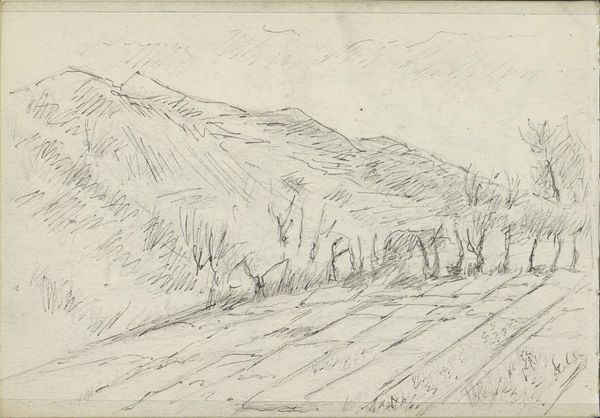
drawing, ink
#
drawing
#
ink drawing
#
landscape
#
ink
#
line
#
realism
Dimensions: height 350 mm, width 505 mm
Copyright: Rijks Museum: Open Domain
Curator: This is Dirck Nab’s "Duinlandschap," rendered in ink on paper in 2007. A quick sketch, yet evocative. Editor: My first thought is… winter. It's a spare, desolate scene. The monochromatic palette adds to the feeling of starkness, of something dormant, waiting. Curator: Absolutely. Let's examine how Nab employs line to construct this mood. Note the stark, wiry quality defining the vegetation in the foreground, the way the lines refuse to resolve into anything traditionally picturesque. Editor: Indeed. Observe how the line becomes almost gestural, communicating the rawness of the landscape. In older iconography, barren trees can symbolize not only winter but also themes of mortality, transition…even spiritual testing. Here, I see it less as somber but more the natural world, persevering and being itself. Curator: The structural composition of the image draws the eye upward and into the hazy distance. The lack of dramatic contrast, or strong tonal modeling, almost flattens the planes of the landscape which gives it a sort of modern spin to this traditional theme. Editor: Agreed, there’s a quiet simplicity, like looking into the artist’s mental state or emotional condition while making it. Curator: The unadorned quality almost resists romantic notions, pushing the viewer to focus instead on pure structure. It’s an intriguing work, as much for what it leaves out as what it includes. Editor: A minimalist testament to the enduring power of natural symbols. It demonstrates how a scene so stark can evoke profound questions about our place within the cyclical rhythms of the world. A humble meditation.
Comments
No comments
Be the first to comment and join the conversation on the ultimate creative platform.

